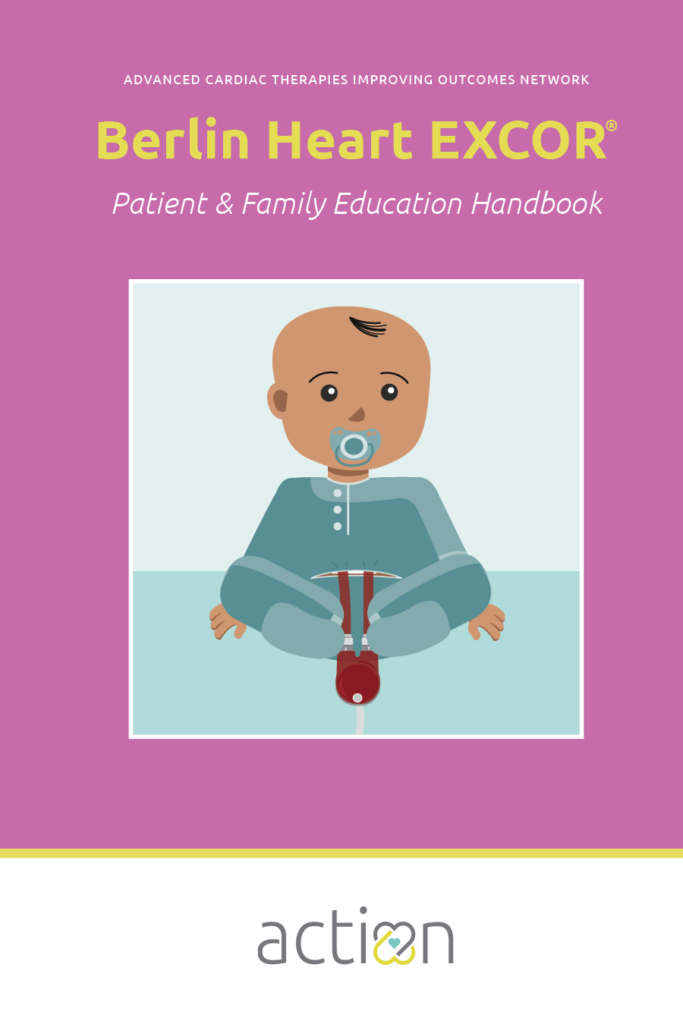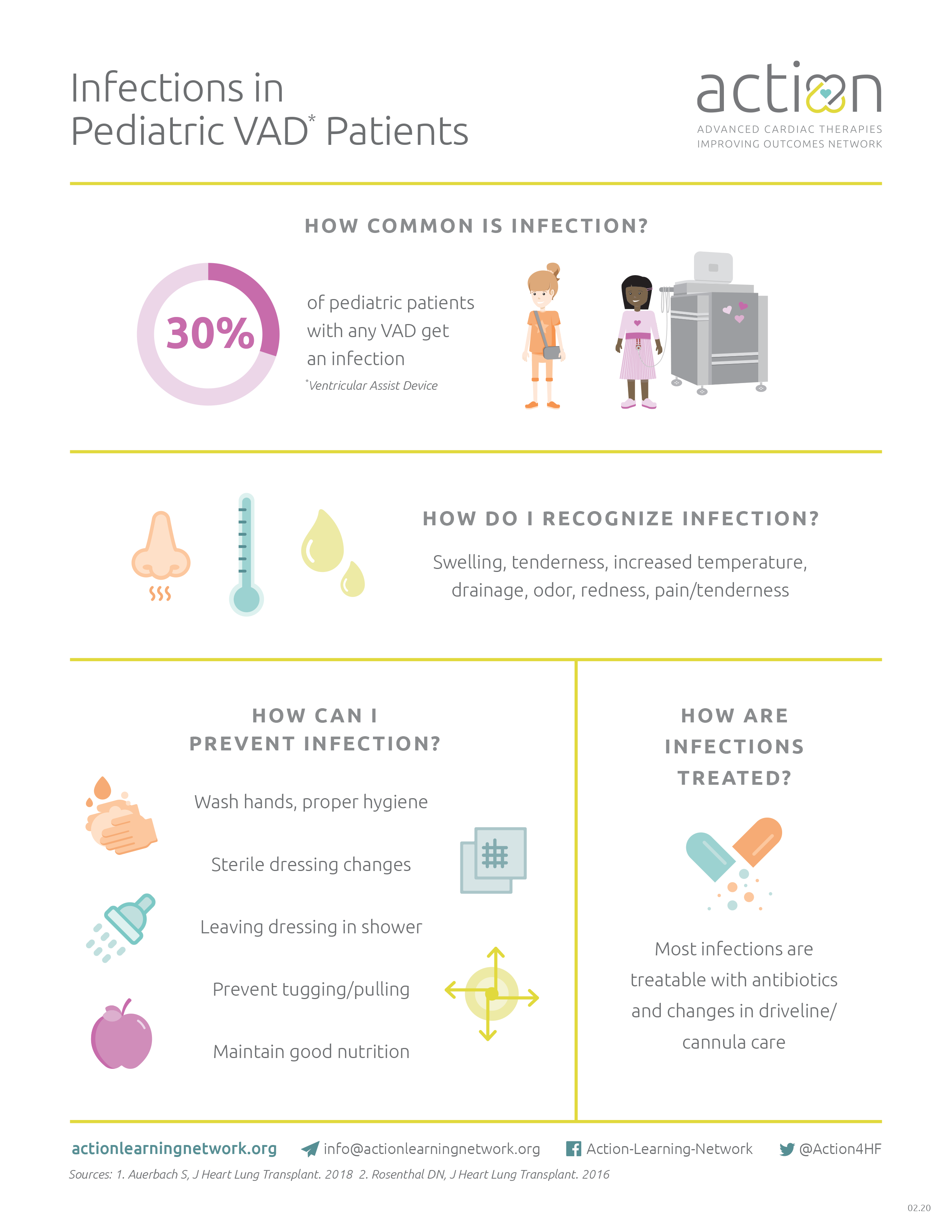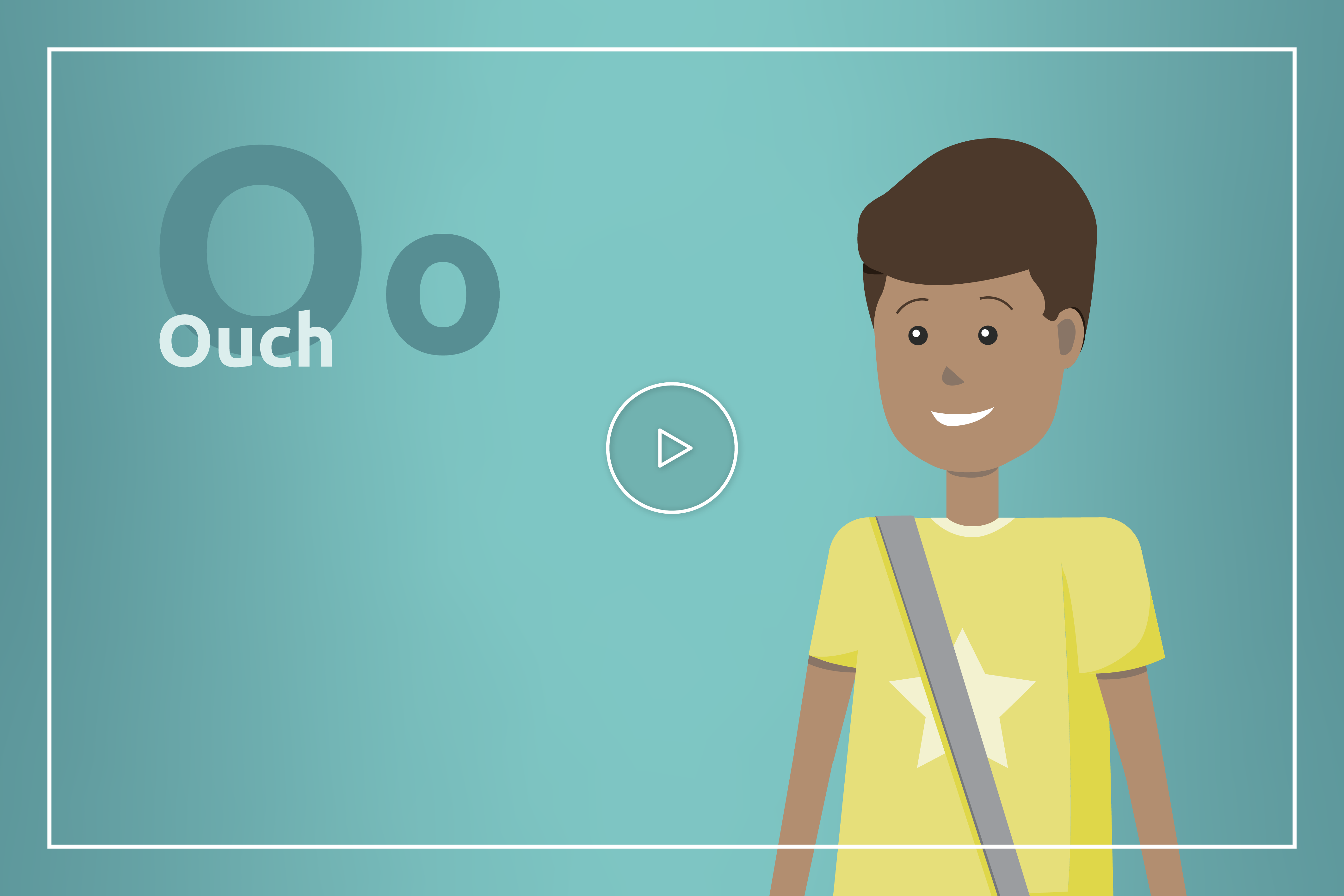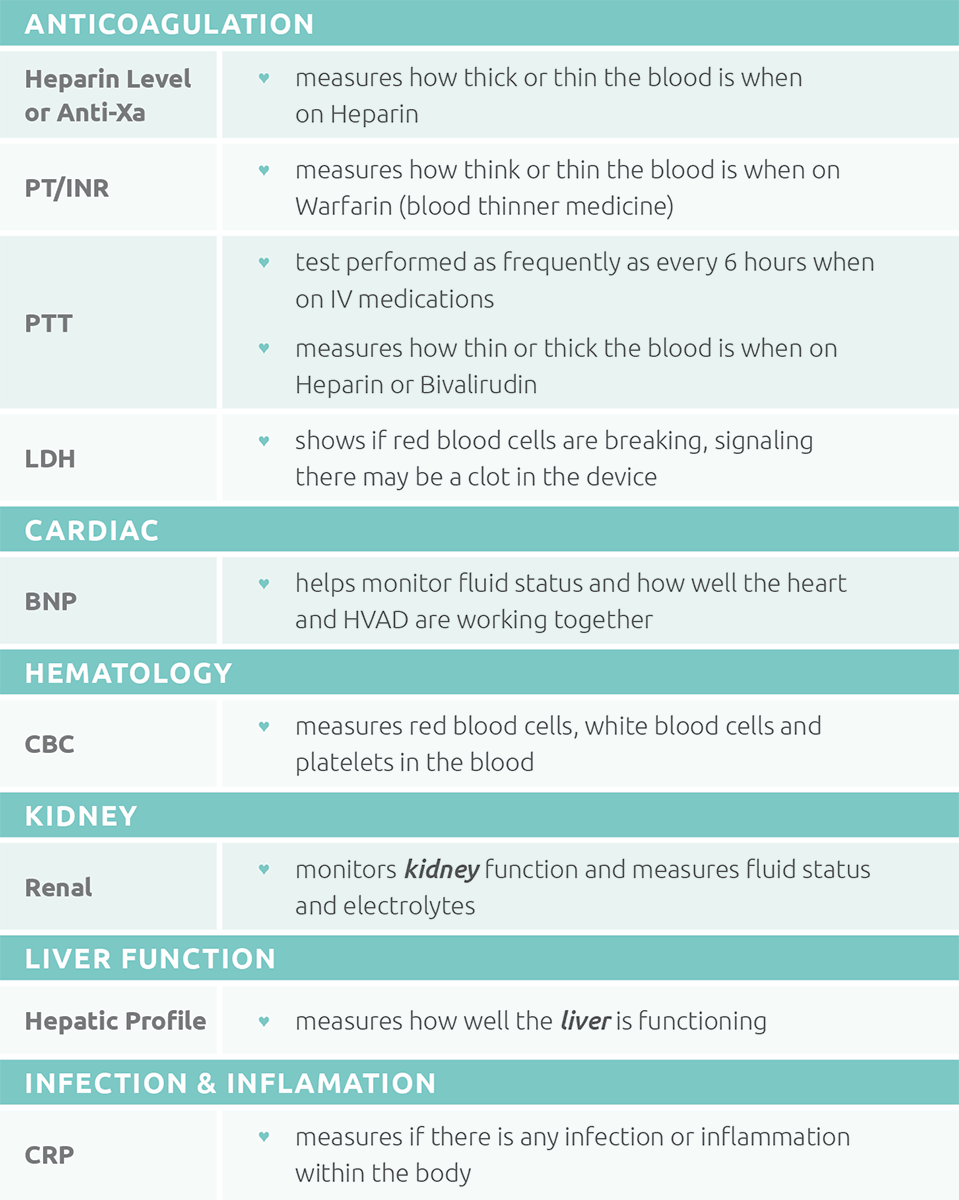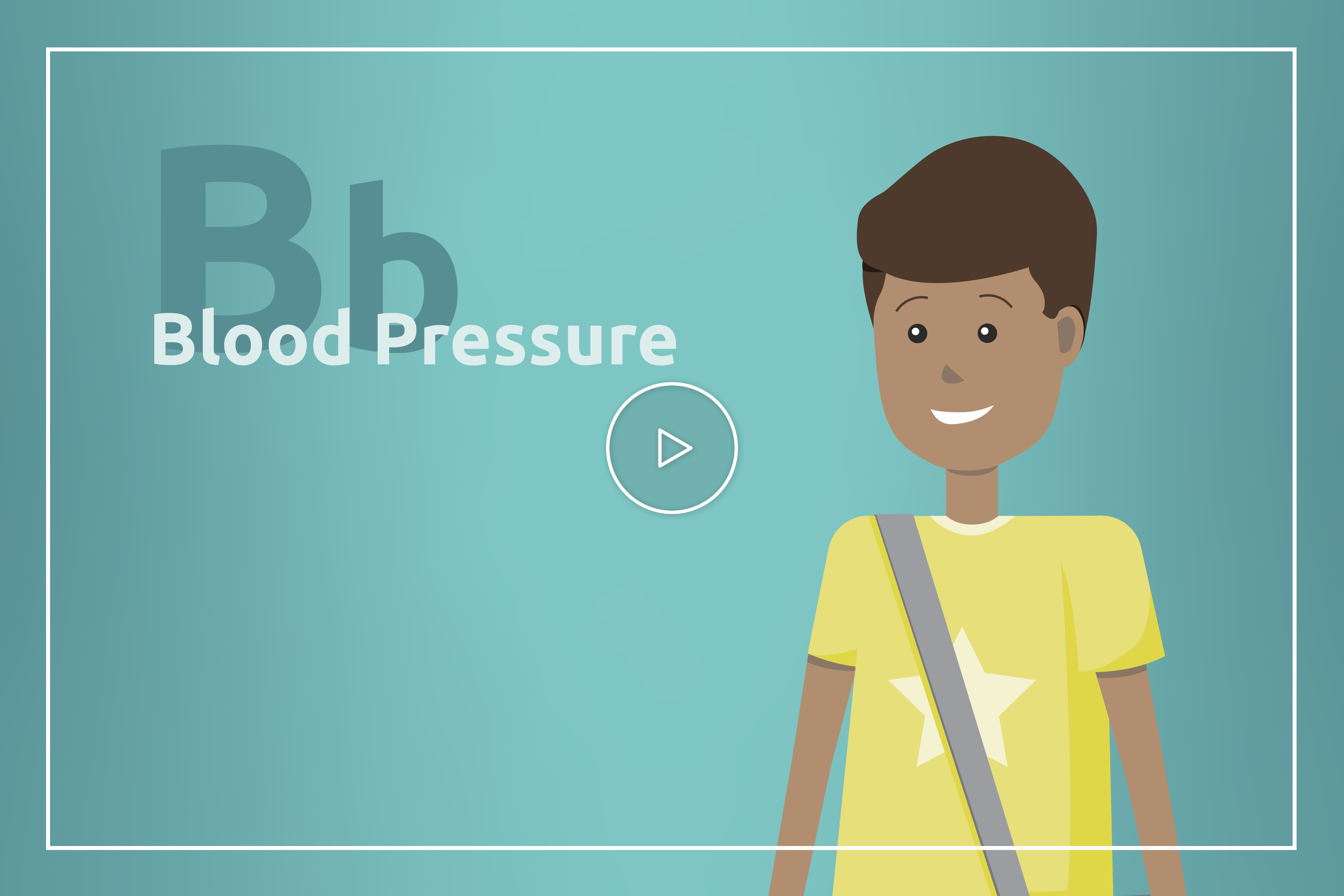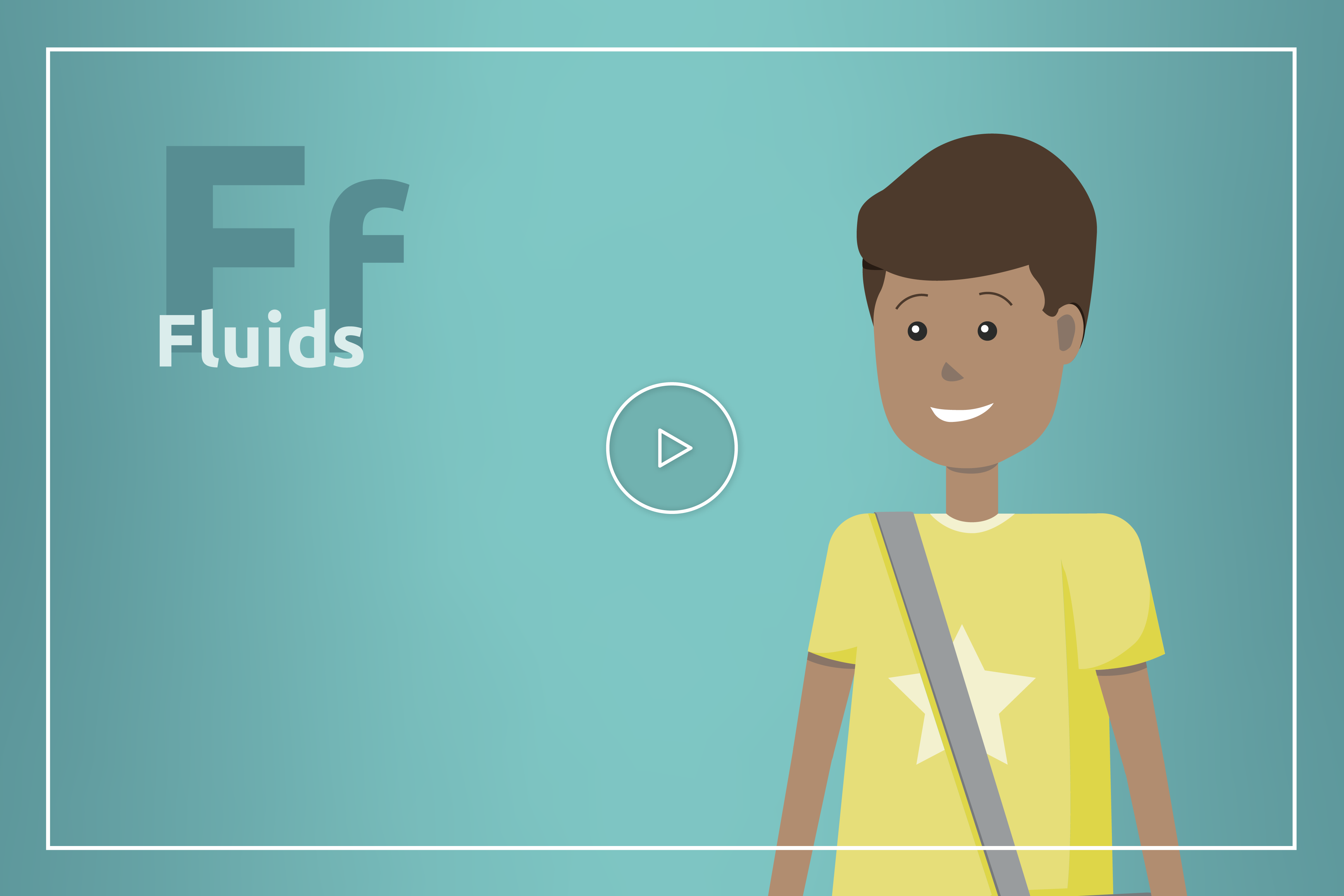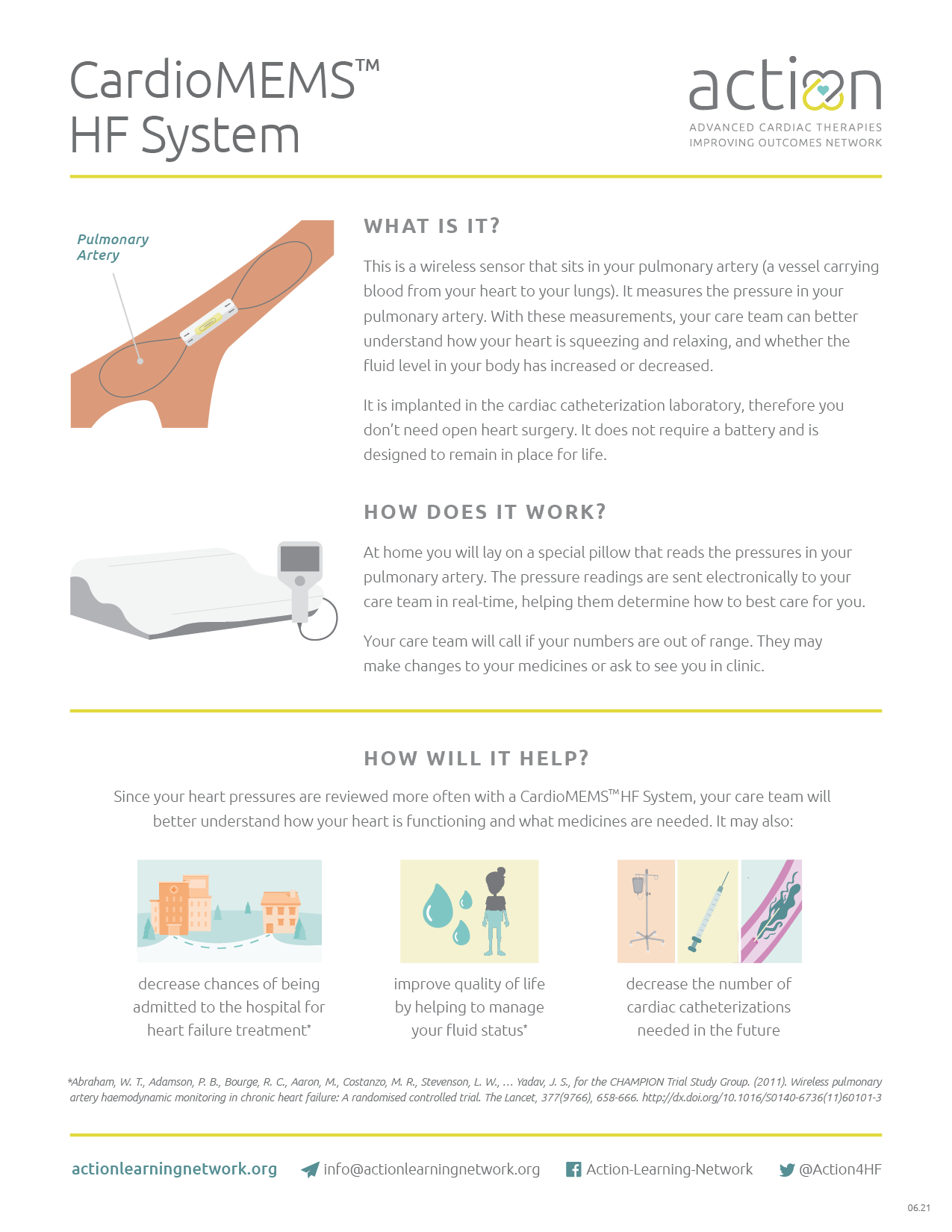Knowing Your Device and
Understanding Surgery
Over the years, advanced technology has been used to develop devices to help patients diagnosed with heart failure. Many of these devices, although designed for adults, have been adapted for use in children. Let’s explore each device and what to expect before, during, and after surgery.
Over the years, advanced technology has been used to develop devices to help patients diagnosed
with heart failure. Many of these devices, although designed for adults, have been adapted for use
in children. Let’s explore each device and what to expect before, during, and after surgery.
-
1
Pacemaker/ICD
-
3
Pre-Transplant
-
4
CardioMEMS™
Sometimes patients with heart failure will have abnormal heart rhythms or their doctor feels like they are at increased risk of having a life-threatening heart rhythm. When a heart rhythm isn’t normal (called arrhythmia), it can cause the heart to beat too slowly (bradycardia), too quickly (tachycardia), or abnormally (dysrhythmia). Also, if the pathway is blocked between the upper and lower parts of the heart, the heart may beat at different rates (called a heart block). A pacemaker or automatic implantable cardioverter defibrillator (ICD) can correct the electrical activity and fix abnormal heart rhythms. An arrhythmia can cause symptoms like fluttering in the chest, dizziness, tiredness, or may even cause fainting. Some arrhythmias are life-threatening and may cause the heart to quiver, which prevents blood from getting to the brain and body. This is considered an emergency situation that requires a defibrillator to shock the heart to reset the rhythm immediately. Pacemakers monitor the heart’s rhythm and send a low voltage electrical signal to the heart to “pace” the heart into a correct rhythm. Pacemakers can be used for a short or long amount of time and can be placed internally (inside the body) or externally (outside the body). The short-term external pacemakers are typically used: The long-term internal pacemaker is a small device with wires that lead to the heart chambers. It is implanted into the chest or belly to help the heart beat at a normal rhythm. Pacemakers typically last for many years. Pacemakers deliver low voltage impulses to correct the heart rhythm. However, an ICD detects lethal arrhythmias and delivers high voltage shocks to reset the heart rhythm during a life-threatening emergency. The pacemaker or ICD implant surgery is a minor surgery when placed through a vessel. Often this procedure is done quickly, however times will vary per patient. During the procedure, the surgeon makes an incision into the skin, places the wires inside the heart chambers, and inserts the small device underneath the skin. The pacemaker or ICD is turned on and the settings are adjusted. Afterwards, the incision is closed. There are some restrictions in activity level for a short time after surgery, but normal activity may resume within a few weeks after implant. Benefits of having a Pacemaker/ICD include: Risks related to Pacemaker/ICD surgery include: Benefits of having a Pacemaker/ICD include: Risks related to Pacemaker/ICD surgery include:Overview
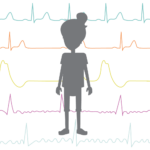 What happens when you turn on a light switch? Electricity travels quickly through wiring that makes a lightbulb glow! The heart works in a similar way. There is a small amount of electricity that moves through a pathway that starts at the top of the heart and travels to the bottom, causing the heart to beat. These electrical signals are called heart rhythms and can be seen when you are connected to an EKG or heart monitor.
What happens when you turn on a light switch? Electricity travels quickly through wiring that makes a lightbulb glow! The heart works in a similar way. There is a small amount of electricity that moves through a pathway that starts at the top of the heart and travels to the bottom, causing the heart to beat. These electrical signals are called heart rhythms and can be seen when you are connected to an EKG or heart monitor.Pacemakers vs ICD

Implanting Your Device
Benefits
Risks
Benefits

Risks



The Berlin Heart EXCOR® (or Berlin Heart) is one of the first-ever VADs designed for infants and children. It has been implanted in thousands of children around the world and can help you get stronger, so you can be in the best place possible to receive a heart transplant. Sometimes, the Berlin Heart will allow your heart to recover so that you may no longer need the VAD and can have it removed. Your care team will talk to you about all of your options. Because the Berlin Heart has been around for a long time, there are plenty of experts around the world that can help support you. Rest assured that you are in very safe hands. Already have a Berlin Heart EXCOR®? Want more information? Check out our Berlin Heart EXCOR® ACTION Patent Education Handbook in English or in Spanish. During VAD surgery, your heart surgeon will place cannulae that are special tubes made of a very soft silicone material. These soft cannulae will come out of your lower chest area just below your breastbone. Your heart has two pumping chambers, a left ventricle and a right ventricle. Your cardiologist and surgeon will decide if you need support on just one ventricle or both. If you only need support for one ventricle, you will have two cannulae. If you need support for both ventricles, you will need four cannulae. The soft cannulae connect to a blood pump that is chosen especially for you. This blood pump is hand-crafted by scientists and engineers to provide adequate blood flow to your entire body. It’s like a little heart that is outside of your body. Your blood pump has another tube connected to it where air will move in and out of it. But don’t worry, the air will not go into your body. Instead the air helps the blood pump to fill and push blood out just like a real heart can. The IKUS is an air compressor that helps move air in and out of your blood pump, helping it fill and eject. Your Berlin Heart makes a humming sound, which is normal. A computer sits on top of the IKUS and allows doctors to adjust the settings of your Berlin Heart. There are several settings your care team may adjust, like the air pressure strength, how often the air pressure moves in and out, and how many times your Berlin Heart pumps. The Berlin Heart helps patients with heart failure, as it improves blood circulation. A Berlin Heart may help reduce heart failure symptoms and improve quality of life while waiting for a heart transplant or your heart to get better. The soft cannula will come out of your lower chest and will need to be cleaned frequently. This is important because bacteria lives on your skin and may cause an infection at your cannula site. You may feel nervous the first few times your dressings are changed, but your care team will be there to support you. There is a risk of stroke with all VADs. A clot can form in the VAD, become dislodged, and may travel up a blood vessel to the brain. A blood clot in the brain leads to a decreased blood flow to the brain in that specific area, and this is called a stroke. Your care team will manage your blood thinner medicines and levels carefully to try to prevent a stroke. Sometimes, even with perfect levels, a stroke will occur. Your care team will monitor you for the following symptoms: There is a risk of bleeding with all VADs. To prevent clots from forming in the device, you have to be on a blood thinner. Sometimes the blood thinner will lead to bleeding that may require a change in medicines, a blood transfusion, or in some cases, a surgery to stop the bleeding. Your care team will manage your blood thinner medicine and levels carefully to try to prevent bleeding. Sometimes, even with perfect levels bleeding will occur. Download the pdf to learn more. Download the pdf to learn more. During VAD surgery, your heart surgeon will place cannulae that are special tubes made of a very soft silicone material. These soft cannulae will come out of your lower chest area just below your breastbone. Your heart has two pumping chambers, a left ventricle and a right ventricle. Your cardiologist and surgeon will decide if you need support on just one ventricle or both. If you only need support for one ventricle, you will have two cannulae. If you need support for both ventricles, you will need four cannulae. The soft cannulae connect to a blood pump that is chosen especially for you. This blood pump is hand-crafted by scientists and engineers to provide adequate blood flow to your entire body. It’s like a little heart that is outside of your body. Your blood pump has another tube connected to it where air will move in and out of it. But don’t worry, the air will not go into your body. Instead the air helps the blood pump to fill and push blood out just like a real heart can. The IKUS is an air compressor that helps move air in and out of your blood pump, helping it fill and eject. Your Berlin Heart makes a humming sound, which is normal. A computer sits on top of the IKUS and allows doctors to adjust the settings of your Berlin Heart. There are several settings your care team may adjust, like the air pressure strength, how often the air pressure moves in and out, and how many times your Berlin Heart pumps. The Berlin Heart helps patients with heart failure, as it improves blood circulation. A Berlin Heart may help reduce heart failure symptoms and improve quality of life while waiting for a heart transplant or your heart to get better. The soft cannula will come out of your lower chest and will need to be cleaned frequently. This is important because bacteria lives on your skin and may cause an infection at your cannula site. You may feel nervous the first few times your dressings are changed, but your care team will be there to support you. There is a risk of stroke with all VADs. A clot can form in the VAD, become dislodged, and may travel up a blood vessel to the brain. A blood clot in the brain leads to a decreased blood flow to the brain in that specific area, and this is called a stroke. Your care team will manage your blood thinner medicines and levels carefully to try to prevent a stroke. Sometimes, even with perfect levels, a stroke will occur. Your care team will monitor you for the following symptoms: There is a risk of bleeding with all VADs. To prevent clots from forming in the device, you have to be on a blood thinner. Sometimes the blood thinner will lead to bleeding that may require a change in medicines, a blood transfusion, or in some cases, a surgery to stop the bleeding. Your care team will manage your blood thinner medicine and levels carefully to try to prevent bleeding. Sometimes, even with perfect levels bleeding will occur. Download the pdf to learn more. Download the pdf to learn more. You will likely have many questions about the Berlin Heart surgery. Your care team will do their best to answer all of them before you decide to have VAD surgery. What should you expect before VAD surgery? Watch the video below to understand what to expect on your Berlin Heart EXCOR® surgery day. Throughout your journey, your care team is there to support and guide you, as well as answer any questions or concerns you have. Everyone’s journey will look a little different. Download the Berlin Heart Patient Journey map to get a feel for what lies ahead. This map will also help you understand when you should be reading and learning about different phases of the journey. Before your surgery, doctors called anesthesiologists will also visit you. They are responsible for keeping you asleep during surgery. You will not feel any pain while you are asleep. All you will remember is traveling down to the operating room. What should you expect after VAD surgery? Watch the video below to understand what to expect on your Berlin Heart EXCOR® surgery day. When you wake up from surgery, you will be in the Intensive Care Unit (ICU). Surgery will make you feel weak and sleepy. For these reasons, you will have a plastic tube in your mouth that will help you breathe. You will also have many special IVs, cables, and drains, which are needed to monitor your VAD and heart function. Your care team will explain everything to you and your family. It’s completely normal for you to be hungry, thirsty, and uncomfortable at times. You will receive pain medicines to help you through this phase of recovery. Once the ICU team thinks you’re strong enough to be more awake and breathe on your own, your medications keeping you sleepy will be turned off. Your breathing tube will be removed, and you will be given oxygen using a nasal cannula or mask. As time goes on, you’ll be able to drink clear fluids like water and apple juice. When your medications supporting your heart have been decreased, you’ll be able to eat regular food again. The ICU team may decide to give you a boost of nutrition, feeding you through a special tube in your nose called a nasogastric tube. When your breathing tube is out and you’re fully awake, this is when rehabilitation begins. Specially trained physical and occupational therapists will assist you in getting out of bed for the first time after surgery. Your nurse and care team will support your Berlin Heart pump. This is going to be very tough at first, and you may feel discomfort. Your care team will manage your discomfort with pain and anxiety medications. Rehabilitation is a slow and steady process, and we will never make you do more than you’re ready to. But, it’s very important that you participate in therapy because your lungs and body are at risk for getting weak if you don’t begin movement immediately. Over the course of days, you will gain strength. The IV lines and drains will be removed from your body, and you will start taking some of your medicines by mouth. When the timing is right, you will no longer require ICU-level care. This is considered a great achievement! You may transition to a general care floor where you will continue to rehabilitate, get stronger and prepare for the next steps in your journey. Having heart problems and needing a VAD is a life-changing experience. It is very normal to feel sad at times. A team of doctors and therapists that specialize in helping children cope with life on a VAD will visit you frequently. Even though you may not feel like sharing your feelings, we encourage you to open up. What should you expect before VAD surgery? Watch the video below to understand what to expect on your Berlin Heart EXCOR® surgery day. Throughout your journey, your care team is there to support and guide you, as well as answer any questions or concerns you have. Everyone’s journey will look a little different. Download the Berlin Heart Patient Journey map to get a feel for what lies ahead. This map will also help you understand when you should be reading and learning about different phases of the journey. Before your surgery, doctors called anesthesiologists will also visit you. They are responsible for keeping you asleep during surgery. You will not feel any pain while you are asleep. All you will remember is traveling down to the operating room. What should you expect after VAD surgery? Watch the video below to understand what to expect on your Berlin Heart EXCOR® surgery day. When you wake up from surgery, you will be in the Intensive Care Unit (ICU). Surgery will make you feel weak and sleepy. For these reasons, you will have a plastic tube in your mouth that will help you breathe. You will also have many special IVs, cables, and drains, which are needed to monitor your VAD and heart function. Your care team will explain everything to you and your family. It’s completely normal for you to be hungry, thirsty, and uncomfortable at times. You will receive pain medicines to help you through this phase of recovery. Once the ICU team thinks you’re strong enough to be more awake and breathe on your own, your medications keeping you sleepy will be turned off. Your breathing tube will be removed, and you will be given oxygen using a nasal cannula or mask. As time goes on, you’ll be able to drink clear fluids like water and apple juice. When your medications supporting your heart have been decreased, you’ll be able to eat regular food again. The ICU team may decide to give you a boost of nutrition, feeding you through a special tube in your nose called a nasogastric tube. When your breathing tube is out and you’re fully awake, this is when rehabilitation begins. Specially trained physical and occupational therapists will assist you in getting out of bed for the first time after surgery. Your nurse and care team will support your Berlin Heart pump. This is going to be very tough at first, and you may feel discomfort. Your care team will manage your discomfort with pain and anxiety medications. Rehabilitation is a slow and steady process, and we will never make you do more than you’re ready to. But, it’s very important that you participate in therapy because your lungs and body are at risk for getting weak if you don’t begin movement immediately. Over the course of days, you will gain strength. The IV lines and drains will be removed from your body, and you will start taking some of your medicines by mouth. When the timing is right, you will no longer require ICU-level care. This is considered a great achievement! You may transition to a general care floor where you will continue to rehabilitate, get stronger and prepare for the next steps in your journey. Having heart problems and needing a VAD is a life-changing experience. It is very normal to feel sad at times. A team of doctors and therapists that specialize in helping children cope with life on a VAD will visit you frequently. Even though you may not feel like sharing your feelings, we encourage you to open up. The SynCardia Total Artificial Heart (TAH-t) is different from the other VADs because it replaces the lower chambers of the heart (ventricles) and the four valves. The TAH-t pumps blood to both the lungs and body. Two tubes (cannulae) come out of the skin and connect to an external machine called a driver. The driver supplies pulses of air to pump blood in and out of the TAH-t. The TAH-t can fit in some larger children, teenagers, and adults. This device is most commonly used for patients who will get a heart transplant. There are several parts of the SynCardia TAH-t system. The TAH-t pump replaces the sick or weak heart ventricles. The TAH-t pump has two chambers—an air chamber and a blood chamber—that are separated by a membrane. The air chamber connects to the cannula and driver, which pushes air in and out. The air moves the membrane in the correct position to fill and eject the blood chamber. On the blood chamber side, the blood enters and exits the chamber. There are two different TAH-t pump sizes: 50 cc and 70 cc. The 50 cc pump is generally used in children and small adults. The 70 cc pump is used in bigger people. Prior to surgery, the care team will review your testing to determine which size device is appropriate for your body size. The two cannulae come out of the body above the belly and connect the right and left TAH-t pumps to the Companion 2 Hospital Driver (C2). The C2 driver is a large machine that pushes air in and out of the TAH-t pump. While in the hospital, the hospital cart is most often used. It shows all of the settings and will allow your care team to make any changes. There are also waveforms that help the team determine how well the device is working. For hospital mobility, the C2 driver caddy may be used as well. The Freedom Driver is a small machine used if you are eligible for discharge from the hospital. It fits in a backpack and allows for more mobility. The batteries for the C2 driver usually last approximately 1 and a half hours. The Freedom Driver batteries last approximately 4 hours and can be recharged through either a standard electrical outlet or a car charger. There are many numbers that you will see on the screen of your SynCardia TAH-t: Alarms can be loud and scary, but they are designed to let us know when something is not working properly. There is no need to panic when you hear an alarm. Your care team will review the steps that you or your caregiver can take to correct the problems. The device provides a large amount of blood volume to the body which helps the other organs (kidney, liver, and lungs) recover if they are damaged. The soft cannula will come out of your lower chest and will need to be cleaned frequently. This is important because bacteria lives on your skin and may cause an infection at your cannula site. You may feel nervous the first few times your dressings are changed, but your care team will be there to support you. High blood pressure can affect the way the device works, so your care team will treat your blood pressure with medicines to keep it within a good range. There is a risk of bleeding with all VADs, but it is more common with the SynCardia. To prevent clots from forming in the device, you have to be on a blood thinner. Sometimes the blood thinner will lead to bleeding that may require a change in medicines, a blood transfusion, or in some cases, a surgery to stop the bleeding. Your care team will manage your blood thinner medicine and levels carefully to try to prevent bleeding. Sometimes, even with perfect levels bleeding will occur. There is a risk of stroke with all VADs. A clot can form in the VAD, become dislodged, and may travel up a blood vessel to the brain. A blood clot in the brain leads to a decreased blood flow to the brain in that specific area, and this is called a stroke. Your care team will manage your blood thinner medicines and levels carefully to try to prevent a stroke. Sometimes, even with perfect levels, a stroke will occur. Your care team will monitor you for the following symptoms: If the device were to stop working, blood flow to your body would completely stop until the device can be restarted. In addition, back up equipment will be nearby. As the air compressors move the blood in and out of the body, it creates a pretty noisy environment. The heart rate is usually set between 125–145 beats per minute and you will hear each beat. Usually people get used to the sound but sometimes it can create anxiety or prevent sleep (noise cancelling headphones and earplugs may help). There are several parts of the SynCardia TAH-t system. The TAH-t pump replaces the sick or weak heart ventricles. The TAH-t pump has two chambers—an air chamber and a blood chamber—that are separated by a membrane. The air chamber connects to the cannula and driver, which pushes air in and out. The air moves the membrane in the correct position to fill and eject the blood chamber. On the blood chamber side, the blood enters and exits the chamber. There are two different TAH-t pump sizes: 50 cc and 70 cc. The 50 cc pump is generally used in children and small adults. The 70 cc pump is used in bigger people. Prior to surgery, the care team will review your testing to determine which size device is appropriate for your body size. The two cannulae come out of the body above the belly and connect the right and left TAH-t pumps to the Companion 2 Hospital Driver (C2). The C2 driver is a large machine that pushes air in and out of the TAH-t pump. While in the hospital, the hospital cart is most often used. It shows all of the settings and will allow your care team to make any changes. There are also waveforms that help the team determine how well the device is working. For hospital mobility, the C2 driver caddy may be used as well. The Freedom Driver is a small machine used if you are eligible for discharge from the hospital. It fits in a backpack and allows for more mobility. The batteries for the C2 driver usually last approximately 1 and a half hours. The Freedom Driver batteries last approximately 4 hours and can be recharged through either a standard electrical outlet or a car charger. There are many numbers that you will see on the screen of your SynCardia TAH-t: Alarms can be loud and scary, but they are designed to let us know when something is not working properly. There is no need to panic when you hear an alarm. Your care team will review the steps that you or your caregiver can take to correct the problems. The device provides a large amount of blood volume to the body which helps the other organs (kidney, liver, and lungs) recover if they are damaged. The soft cannula will come out of your lower chest and will need to be cleaned frequently. This is important because bacteria lives on your skin and may cause an infection at your cannula site. You may feel nervous the first few times your dressings are changed, but your care team will be there to support you. High blood pressure can affect the way the device works, so your care team will treat your blood pressure with medicines to keep it within a good range. There is a risk of bleeding with all VADs, but it is more common with the SynCardia. To prevent clots from forming in the device, you have to be on a blood thinner. Sometimes the blood thinner will lead to bleeding that may require a change in medicines, a blood transfusion, or in some cases, a surgery to stop the bleeding. Your care team will manage your blood thinner medicine and levels carefully to try to prevent bleeding. Sometimes, even with perfect levels bleeding will occur. There is a risk of stroke with all VADs. A clot can form in the VAD, become dislodged, and may travel up a blood vessel to the brain. A blood clot in the brain leads to a decreased blood flow to the brain in that specific area, and this is called a stroke. Your care team will manage your blood thinner medicines and levels carefully to try to prevent a stroke. Sometimes, even with perfect levels, a stroke will occur. Your care team will monitor you for the following symptoms: If the device were to stop working, blood flow to your body would completely stop until the device can be restarted. In addition, back up equipment will be nearby. As the air compressors move the blood in and out of the body, it creates a pretty noisy environment. The heart rate is usually set between 125–145 beats per minute and you will hear each beat. Usually people get used to the sound but sometimes it can create anxiety or prevent sleep (noise cancelling headphones and earplugs may help). Navigating such a big and important surgery can feel overwhelming. There are many people and resources available to help you get through your surgery journey and ultimately get you living a more comfortable and healthy life. You can also prepare by reading and learning as much as you can before heading into surgery. Before your surgery, doctors called anesthesiologists will visit you. They are responsible for keeping you asleep during surgery. You will not feel any pain while you are asleep. All you will remember is traveling down to the operating room. How is the VAD implanted in the chest? When you wake up from surgery, you will be in the Intensive Care Unit (ICU). Surgery, and the medications that you were given to keep you asleep, will make you very weak and sleepy. You will have a breathing tube that’s connected to a ventilator (breathing machine) and you will be connected to many lines, tubes, and medical equipment. This medical equipment is necessary to monitor you and give you the medicines needed for recovery. All the equipment and lines can be startling to see, but they are completely normal. Day by day, your care team will work toward removing lines and tubes. It is also important to get you moving soon after surgery. Getting out of bed as soon as possible will help your body heal. As with any surgery, you will probably feel some pain afterwards. Learn more in the interactive below about what to expect. Once your care team thinks you’re strong enough to be more awake and breathe on your own, your medicines keeping you sleepy will be turned off. Your breathing tube will be removed, and you will be given oxygen using a nasal cannula or mask. As time goes on, you’ll be able to drink clear fluids like water and apple juice. When your medicines supporting your heart have been decreased, you’ll be able to eat regular food again. Your care team may decide to give you a boost of nutrition, feeding you through a special tube in your nose called a nasogastric tube. Cardiac Step-Down Unit When you have a VAD there is a lot for you and your caregivers to learn. You will have laboratory testing (labs or bloodwork), done at various scheduled times or whenever your care team feels they need to follow you closer. These labs tell your doctor how well your body is functioning with the new device. Click on the image to view a list of possible requested labs. Testing will become part of normal life. Testing will be done at scheduled times and whenever your team feels like you may need closer surveillance. You may, however, have an exercise test on a stationary bike, treadmill, or 6-minute walk to determine how well you are doing with the TAH-t. In the hospital, medicine will be given through an IV. Your care team will change those medicines to be given by mouth as you recover. It’s important the medicines are taken at the same time every day. Use a pill box to keep your medicines organized. Inform your care team if you take any additional medicines NOT prescribed by them. Learn more about medicines in the interactive below. You will take aspirin to prevent platelets from sticking together and forming a clot in your TAH-t. Warfarin (Coumadin) Causes for High INR (thin blood): *Discuss with your care team Causes for Low INR (thick blood): Learn more about warfarin (Coumadin) in the Exploring Medicine Treatment Options module and learn more about anticoagulation through the interactive below. Blood Pressure Medicines Antibiotics Stomach Ulcers & Acid Reflux Medicines Diuretics (medicines to remove extra body water) Keeping your blood pressure in a healthy range is very important. Your care team will determine a target blood pressure goal and adjust medicines to meet it. Blood pressure can be monitored using a blood pressure cuff. Learn more in the interactive below about how your care team will help you stay at a healthy blood pressure. Caring for your cannulae will help you avoid getting an infection. Once you have your VAD, you must stay on a stable diet. Eating a consistent healthy diet will help you heal and get stronger. Fluid balance is very important to maintain TAH-t flow. If there is too much fluid inside the heart and body (for example, if you’re drinking much more than usual), the TAH-t may not be able to handle the extra fluid. Learn more about why it’s important to balance how much fluid you are drinking: For some patients, having a TAH-t and needing lots of medical care can be hard. Many patients that have TAH-t surgery notice an improvement in symptoms while they are in the hospital, but it can take months for you to get stronger and recover. As you recover, you or your caregiver may feel sad, worried, or even angry at times. This is normal. Be honest about how you’re feeling and talk with your care team if you have these feelings or any changes in behavior. Taking care of your emotional and mental health is a very important part of your care. Your care team will be able to connect you with the right support services. If you are discharged out of the hospital, you will have a detailed communication plan. The plan will include a phone number to call. Your care team will want be in contact communication with you. Things you should tell them include: Medical Safety Card Before your surgery, doctors called anesthesiologists will visit you. They are responsible for keeping you asleep during surgery. You will not feel any pain while you are asleep. All you will remember is traveling down to the operating room. How is the VAD implanted in the chest? When you wake up from surgery, you will be in the Intensive Care Unit (ICU). Surgery, and the medications that you were given to keep you asleep, will make you very weak and sleepy. You will have a breathing tube that’s connected to a ventilator (breathing machine) and you will be connected to many lines, tubes, and medical equipment. This medical equipment is necessary to monitor you and give you the medicines needed for recovery. All the equipment and lines can be startling to see, but they are completely normal. Day by day, your care team will work toward removing lines and tubes. It is also important to get you moving soon after surgery. Getting out of bed as soon as possible will help your body heal. As with any surgery, you will probably feel some pain afterwards. Learn more in the interactive below about what to expect. Once your care team thinks you’re strong enough to be more awake and breathe on your own, your medicines keeping you sleepy will be turned off. Your breathing tube will be removed, and you will be given oxygen using a nasal cannula or mask. As time goes on, you’ll be able to drink clear fluids like water and apple juice. When your medicines supporting your heart have been decreased, you’ll be able to eat regular food again. Your care team may decide to give you a boost of nutrition, feeding you through a special tube in your nose called a nasogastric tube. Cardiac Step-Down Unit When you have a VAD there is a lot for you and your caregivers to learn. You will have laboratory testing (labs or bloodwork), done at various scheduled times or whenever your care team feels they need to follow you closer. These labs tell your doctor how well your body is functioning with the new device. Click on the image to view a list of possible requested labs. Testing will become part of normal life. Testing will be done at scheduled times and whenever your team feels like you may need closer surveillance. You may, however, have an exercise test on a stationary bike, treadmill, or 6-minute walk to determine how well you are doing with the TAH-t. In the hospital, medicine will be given through an IV. Your care team will change those medicines to be given by mouth as you recover. It’s important the medicines are taken at the same time every day. Use a pill box to keep your medicines organized. Inform your care team if you take any additional medicines NOT prescribed by them. Learn more about medicines in the interactive below. You will take aspirin to prevent platelets from sticking together and forming a clot in your TAH-t. Warfarin (Coumadin) Causes for High INR (thin blood): *Discuss with your care team Causes for Low INR (thick blood): Learn more about warfarin (Coumadin) in the Exploring Medicine Treatment Options module and learn more about anticoagulation through the interactive below. Blood Pressure Medicines Antibiotics Stomach Ulcers & Acid Reflux Medicines Diuretics (medicines to remove extra body water) Keeping your blood pressure in a healthy range is very important. Your care team will determine a target blood pressure goal and adjust medicines to meet it. Blood pressure can be monitored using a blood pressure cuff. Learn more in the interactive below about how your care team will help you stay at a healthy blood pressure. Caring for your cannulae will help you avoid getting an infection. Once you have your VAD, you must stay on a stable diet. Eating a consistent healthy diet will help you heal and get stronger. Fluid balance is very important to maintain TAH-t flow. If there is too much fluid inside the heart and body (for example, if you’re drinking much more than usual), the TAH-t may not be able to handle the extra fluid. Learn more about why it’s important to balance how much fluid you are drinking: For some patients, having a TAH-t and needing lots of medical care can be hard. Many patients that have TAH-t surgery notice an improvement in symptoms while they are in the hospital, but it can take months for you to get stronger and recover. As you recover, you or your caregiver may feel sad, worried, or even angry at times. This is normal. Be honest about how you’re feeling and talk with your care team if you have these feelings or any changes in behavior. Taking care of your emotional and mental health is a very important part of your care. Your care team will be able to connect you with the right support services. If you are discharged out of the hospital, you will have a detailed communication plan. The plan will include a phone number to call. Your care team will want be in contact communication with you. Things you should tell them include: Medical Safety Card Berlin Heart EXCOR®
Overview
Your Surgery Journey
Overview
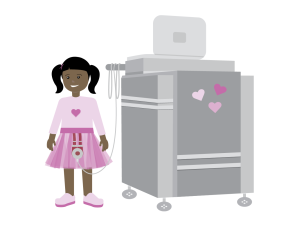
Device Components
Benefits
Risks
Device Components
Cannulae
Blood Pump
IKUS
Benefits

Risks
 There are some risks with a Berlin Heart, but your care team will work hard to keep you safe.
There are some risks with a Berlin Heart, but your care team will work hard to keep you safe. Infection
Stroke
Bleeding
Pediatric VAD Infections
Take ACTION Reducing Stroke Rates
Device Components
Cannulae
Blood Pump
IKUS
Benefits

Risks
 There are some risks with a Berlin Heart, but your care team will work hard to keep you safe.
There are some risks with a Berlin Heart, but your care team will work hard to keep you safe. Infection
Stroke
Bleeding
Pediatric VAD Infections
Take ACTION Reducing Stroke Rates
Your Surgery Journey

Preparing for Surgery
After Surgery
Recovery
Preparing for Surgery
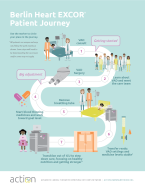
Download PDFAfter Surgery
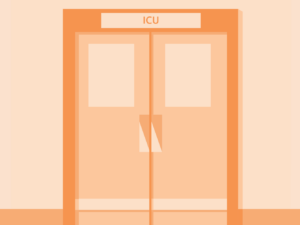

Recovery
Preparing for Surgery

Download PDFAfter Surgery


Recovery
SynCardia (TAH-t)
Overview
Your Surgery Journey
Overview
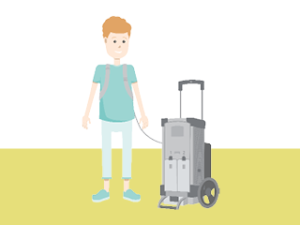
Device Components
Benefits
Risks
Device Components
SynCardia (TAH-t) Ventricles
Cannulae
Companion 2 (C2) Driver (Hospital Cart & Caddy) or Freedom® Portable Driver (Freedom Driver)
Electrical Power
Pump Parameters
Alarms
Benefits
 The SynCardia TAH-t is beneficial for patients with right and left heart failure, hypertrophic cardiomyopathies, and post-transplant graft failure. It completely takes over the work of both ventricles so that you may recover and wait for a transplant.
The SynCardia TAH-t is beneficial for patients with right and left heart failure, hypertrophic cardiomyopathies, and post-transplant graft failure. It completely takes over the work of both ventricles so that you may recover and wait for a transplant.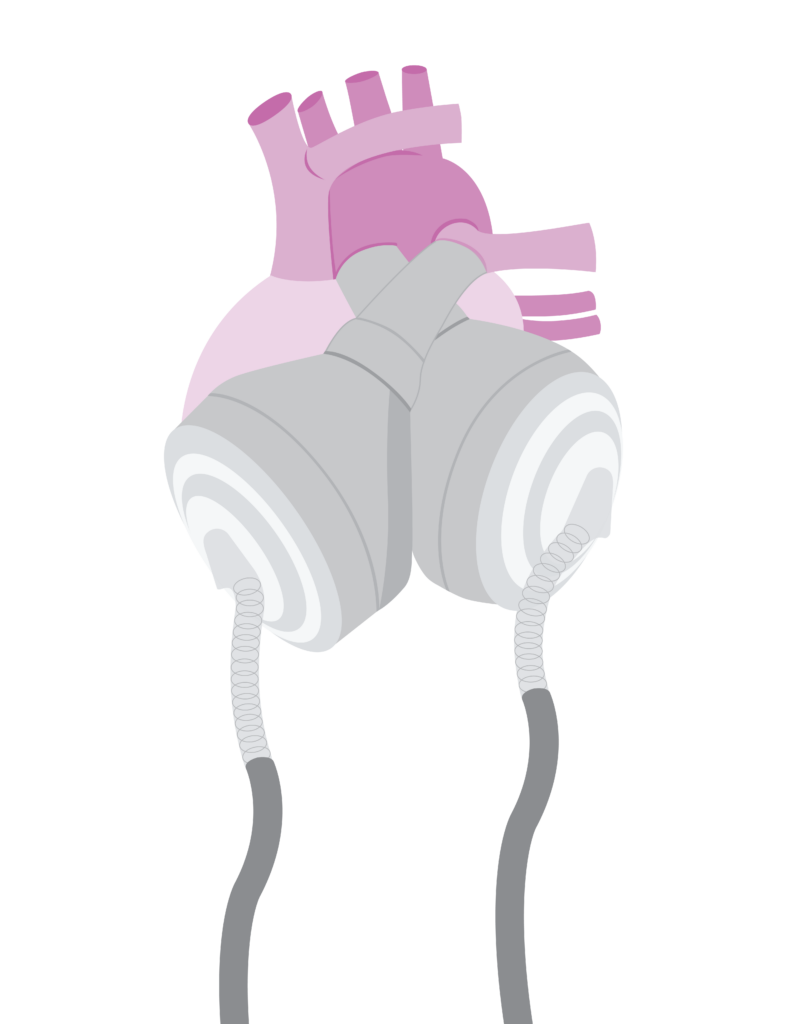
Risks
 There are some risks with SynCardia TAH-t but your care team will work hard to keep you safe.
There are some risks with SynCardia TAH-t but your care team will work hard to keep you safe.Infection
High Blood Pressure
Bleeding

Stroke
Device Malfunction
Noise
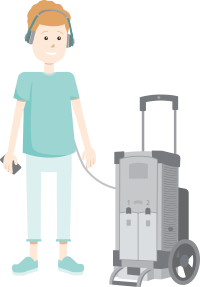
Device Components
SynCardia (TAH-t) Ventricles
Cannulae
Companion 2 (C2) Driver (Hospital Cart & Caddy) or Freedom® Portable Driver (Freedom Driver)
Electrical Power
Pump Parameters
Alarms
Benefits
 The SynCardia TAH-t is beneficial for patients with right and left heart failure, hypertrophic cardiomyopathies, and post-transplant graft failure. It completely takes over the work of both ventricles so that you may recover and wait for a transplant.
The SynCardia TAH-t is beneficial for patients with right and left heart failure, hypertrophic cardiomyopathies, and post-transplant graft failure. It completely takes over the work of both ventricles so that you may recover and wait for a transplant.
Risks
 There are some risks with SynCardia TAH-t but your care team will work hard to keep you safe.
There are some risks with SynCardia TAH-t but your care team will work hard to keep you safe.Infection
High Blood Pressure
Bleeding

Stroke
Device Malfunction
Noise

Your Surgery Journey
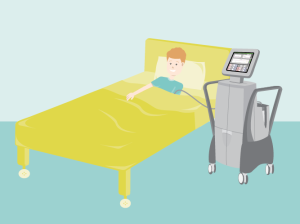
Preparing for Surgery
After Surgery
Recovery Self Care
Discharge
Preparing for Surgery
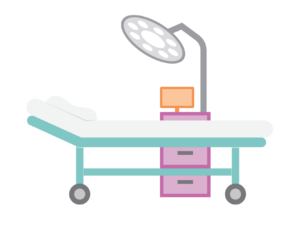
Throughout your journey, your care team is there to support and guide you, as well as answer any questions or concerns you have.Your Surgery Day
The surgery can take all day. The surgeon performs a sternotomy, which involves opening the chest, cutting away the diseased ventricles and valves, and connecting the TAH-t to the upper heart chambers (or atria). This will leave a scar on the chest. A heart and lung bypass machine is required to circulate your blood during the surgery.After Surgery

The Cardiac Step-Down Unit, or cardiac floor, is where patients are transferred after the ICU. It is for patients who are not as critically ill but still need to be in the hospital. In the cardiac step-down unit, your focus will be on getting stronger. In addition, this is the time that education becomes even more important. In some cases being discharged out of the hospital may be possible. Your care team will discuss this with you.Recovery Self Care
What labs could you need?
What tests could you need?
What medicines could you take?
Once your care team determines the time is right, you will take warfarin pills by mouth. Warfarin is the most important medicine you will take, but it can be difficult to get your dose (the amount you take) correct. The dose needed will go up and down frequently depending on your INR and it can take a number of days to get it right. Once your dose is correct, your IV blood thinner medicine will be turned off. Warfarin is what makes your INR (blood levels for anticoagulation or how thick or thin your blood is) increase. Below are causes for: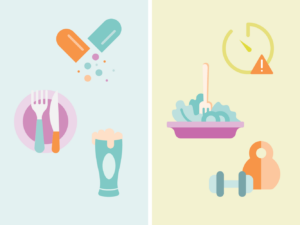
At times, on a TAH-t you may have high blood pressure and require medicines to keep the TAH-t pumping well and can decrease your risk of stroke.
Antibiotics are given in the operating room and ICU to prevent infection. They are also given if your cannulae get infected. You may need antibiotics indefinitely to prevent infection. Antibiotics can make your INR high or low. Immediately notify your care team if you start taking an antibiotic.
Medicines to prevent “heartburn” are used to decrease the acid in the stomach. This may help with decreasing any stomach discomfort you may have.
Diuretics were important when you were in heart failure. When you are on a TAH-t you should need less, but you still may need a small amount to get the fluids in your body just right.What should you know about your blood pressure?
Why is it important to care for your cannula site?
What should you be eating and drinking?
How are you feeling?
Discharge
 In rare cases, TAH-t patients may be discharged out of the hospital on the Freedom® Portable Driver. If your care team feels it’s safe for you to return home and go to school or work, multiple steps will occur to ensure your safety. Your care team will explain the specific accomplishments you must achieve in order to be discharged.
In rare cases, TAH-t patients may be discharged out of the hospital on the Freedom® Portable Driver. If your care team feels it’s safe for you to return home and go to school or work, multiple steps will occur to ensure your safety. Your care team will explain the specific accomplishments you must achieve in order to be discharged. When should you call your care team?

What should I tell my local emergency services? (Medical Services/Fire/Utilities)
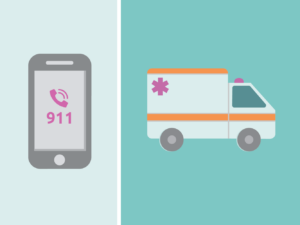
Either you or your care team members should notify your local emergency medical department when you are discharged. It is nice for them to know you are at home with life-saving equipment. If you lose electricity, you must relocate to a new location. You can contact your care team if you have questions about what to do.
Always carry your medical safety card with you in case of an emergency. If you don’t have a medical safety card, download and fill out the ACTION VAD Emergency Medical Safety Card below. Preparing for Surgery

Throughout your journey, your care team is there to support and guide you, as well as answer any questions or concerns you have.Your Surgery Day
The surgery can take all day. The surgeon performs a sternotomy, which involves opening the chest, cutting away the diseased ventricles and valves, and connecting the TAH-t to the upper heart chambers (or atria). This will leave a scar on the chest. A heart and lung bypass machine is required to circulate your blood during the surgery.After Surgery

The Cardiac Step-Down Unit, or cardiac floor, is where patients are transferred after the ICU. It is for patients who are not as critically ill but still need to be in the hospital. In the cardiac step-down unit, your focus will be on getting stronger. In addition, this is the time that education becomes even more important. In some cases being discharged out of the hospital may be possible. Your care team will discuss this with you.Recovery Self Care
What labs could you need?
What tests could you need?
What medicines could you take?
Once your care team determines the time is right, you will take warfarin pills by mouth. Warfarin is the most important medicine you will take, but it can be difficult to get your dose (the amount you take) correct. The dose needed will go up and down frequently depending on your INR and it can take a number of days to get it right. Once your dose is correct, your IV blood thinner medicine will be turned off. Warfarin is what makes your INR (blood levels for anticoagulation or how thick or thin your blood is) increase. Below are causes for:
At times, on a TAH-t you may have high blood pressure and require medicines to keep the TAH-t pumping well and can decrease your risk of stroke.
Antibiotics are given in the operating room and ICU to prevent infection. They are also given if your cannulae get infected. You may need antibiotics indefinitely to prevent infection. Antibiotics can make your INR high or low. Immediately notify your care team if you start taking an antibiotic.
Medicines to prevent “heartburn” are used to decrease the acid in the stomach. This may help with decreasing any stomach discomfort you may have.
Diuretics were important when you were in heart failure. When you are on a TAH-t you should need less, but you still may need a small amount to get the fluids in your body just right.What should you know about your blood pressure?
Why is it important to care for your cannula site?
What should you be eating and drinking?
How are you feeling?
Discharge
 In rare cases, TAH-t patients may be discharged out of the hospital on the Freedom® Portable Driver. If your care team feels it’s safe for you to return home and go to school or work, multiple steps will occur to ensure your safety. Your care team will explain the specific accomplishments you must achieve in order to be discharged.
In rare cases, TAH-t patients may be discharged out of the hospital on the Freedom® Portable Driver. If your care team feels it’s safe for you to return home and go to school or work, multiple steps will occur to ensure your safety. Your care team will explain the specific accomplishments you must achieve in order to be discharged. When should you call your care team?

What should I tell my local emergency services? (Medical Services/Fire/Utilities)

Either you or your care team members should notify your local emergency medical department when you are discharged. It is nice for them to know you are at home with life-saving equipment. If you lose electricity, you must relocate to a new location. You can contact your care team if you have questions about what to do.
Always carry your medical safety card with you in case of an emergency. If you don’t have a medical safety card, download and fill out the ACTION VAD Emergency Medical Safety Card below.
Being on the heart transplant waitlist is a time to be hopeful about the next phase in your journey. There is also a lot to know. Let’s take a few minutes to watch the video below and learn more about the transplant waiting list process. Families and patients sometimes have to wait years for a heart transplant. ACTION is working to help patients become stronger and healthier while they wait for a life-saving transplant. This work has especially touched the hearts of the McQueen Family and they now help lead our efforts! Watch the video below to learn more. For information about transplants, including a patient and family guidebook please visit their website here. Check out our quick facts guide which includes information about: How long could a transplanted heart last?Overview
Waiting for My New Heart
Additional Resources
Pediatric Heart Transplant Society
10 Things for VAD Patients To Know About Pediatric Heart Transplants
At home you will lay on a special pillow that reads the pressures in your pulmonary artery and sends the readings to your care team electronically. These pressure readings help your care team manage your heart failure symptoms and check for early signs of worsening heart failure. Your care team will call you if your pressure numbers are outside of the range they would like for you. They may need to make changes to your medicines or they may want to see you in person. Want more information? The device is implanted during a cardiac catheterization procedure. Placement does not require an open heart surgery. It has no battery and is designed to remain in place for life. CardioMEMS™ has helped decrease heart failure hospital admissions by almost 50% in adult patients, so it has the potential to decrease your chance of entering the hospital for heart failure treatment. It helps your care team know how the heart is functioning and what medications are needed. CardioMEMS™ can improve your quality of life by: Since your heart pressures are reviewed more often with this device, it may also decrease the need for future cardiac catheterizations. Adverse rates are minimal for CardioMEMS™ placement. The CardioMEMS™ is placed during a cardiac catheterization, so your care team will monitor your insertion site for any bleeding, swelling, or change in color or temperature of your legs. In rare instances, a small blood clot could form at your insertion site and your legs may not get the normal full blood supply to your toes. If this happens, you may have to come back to the hospital for treatment. You will need to be on a blood thinner medicine after the placement of your CardioMEMS™ for a short period of time. This will decrease the risk of additional complications not related to blood clots. CardioMEMS™ has helped decrease heart failure hospital admissions by almost 50% in adult patients, so it has the potential to decrease your chance of entering the hospital for heart failure treatment. It helps your care team know how the heart is functioning and what medications are needed. CardioMEMS™ can improve your quality of life by: Since your heart pressures are reviewed more often with this device, it may also decrease the need for future cardiac catheterizations. Adverse rates are minimal for CardioMEMS™ placement. The CardioMEMS™ is placed during a cardiac catheterization, so your care team will monitor your insertion site for any bleeding, swelling, or change in color or temperature of your legs. In rare instances, a small blood clot could form at your insertion site and your legs may not get the normal full blood supply to your toes. If this happens, you may have to come back to the hospital for treatment. You will need to be on a blood thinner medicine after the placement of your CardioMEMS™ for a short period of time. This will decrease the risk of additional complications not related to blood clots.Overview
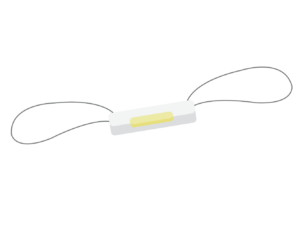 A CardioMEMS™ is an implantable wireless device that sits in the pulmonary artery, a blood vessel that takes blood from your heart to your lungs. The device measures the pressure in your pulmonary artery. The pressure in your pulmonary artery reflects how your heart is squeezing and relaxing, as well as marks how much fluid you have in your body.
A CardioMEMS™ is an implantable wireless device that sits in the pulmonary artery, a blood vessel that takes blood from your heart to your lungs. The device measures the pressure in your pulmonary artery. The pressure in your pulmonary artery reflects how your heart is squeezing and relaxing, as well as marks how much fluid you have in your body.
Check out our CardioMEMs™ HF System patient and family education flyer.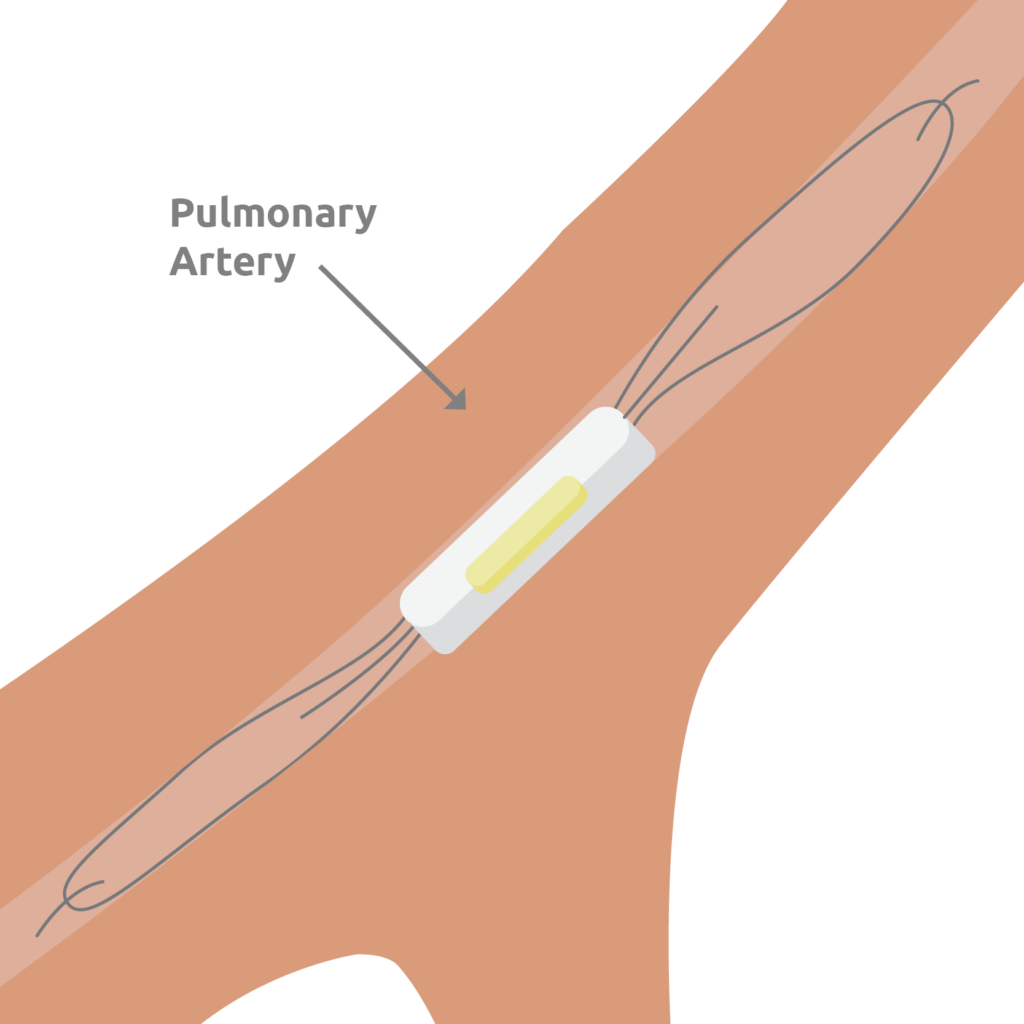
Implanting Your Device
Benefits
Risks
Benefits

Risks




